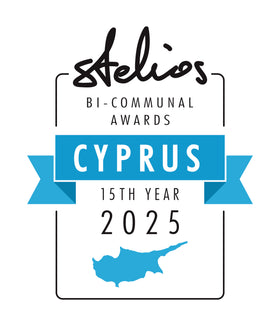The Cyprus Problem: A brief summary
There is an island.
It is a beautiful island in the middle of the Mediterranean, close to the Middle East. It is Cyprus.
There are all kinds of people on this island. The people speak in multiple languages, practice different religions, and come from various places. They are neighbours, friends and family.
The island was established as a British colony in 1878, officially “Colony of Cyprus”. The British used the island to control the petrol in the Middle East and roads to the riches of India. During their rule, they started categorizing the people. Instead of humans, the people became Christian, Muslim, Jewish, Turkish, Greek, Maronite and Latin.
The people on the island wanted to be free of British rule. They started rising against their colonizers. They gained ground but the communities on the island had different ideas. British used these differences to pit the communities against one another to continue the British rule.
There were two main communities on the island: the Turkish-Cypriot community and the Greek-Cypriot community. Divisions grew larger and differences started to become an identity. The Greek-Cypriot Community was the majority of the population and wanted to unite with Greece while Turkish-speaking Cypriots did not. The Turkish-Cypriot community turned to Turkey. The British played into this debate to keep the Cypriots divided, which set the stage for a civil war.
In 1960, Britain began moving out of all its colonies around the World, but they still wanted military presence on the island. So, a deal was struck. Britain, Turkey and Greece as the "mother" countries got together and decided that Cypriots would have a republic. They decided what the republic would look like and guaranteed the security of the young republic. The Cypriot republic was born without much of a say from Cypriots. The Greek Cypriot majority resented the power-sharing system created by the “mother” states, and divisions widened.
The differences remained and turned violent when two Turkish Cypriots were killed by Greek Cypriot police on the "bloody Christmas” of 1963. The violence resulted in the death of 364 Turkish and 174 Greek Cypriots, the destruction of 109 Turkish Cypriot and mixed villages, and the displacement of more than 25,000 Turkish Cypriots. Turkish Cypriots left the government positions and the community at large started living in ghettos.
After more than decade-long civil clashes, the whole island broke loose in 1974. First, the military government in Greece backed a coup, ousting the Cypriot president to get control of the country and unite the island with Greece. Turkey subsequently intervened five days later and overtook 34% of the island, dividing the island ethnically.
The clashes and heavy violence resulted in 180,000 Greek Cypriots forcibly removed from their homes in the north and pushed to southern Cyprus. At the same time, around 50,000 Turkish Cypriots were displaced to northern Cyprus. There are 1,534 Greek Cypriots and 502 Turkish Cypriots still "missing" as a result of the fighting from 1963 to 1974.
Since 1974, the island has been divided into four regions. The majority Greek-speaking southern Cyprus, recognized as the Republic of Cyprus internationally and a member of the European Union, makes up the first region. The island's northern part is the second region and is home to a Turkish-speaking majority, a self-declared republic only Turkey recognizes. The third region is the "Green Line" is a 112-mile buffer zone between northern and southern Cyprus and is controlled by the United Nations peacekeeping force. The fourth region consists of the two sovereign British military bases.
The checkpoints through the buffer zone were closed between 1974 and 2003, so the communities had no interaction during that time as they were physically separated.
All the communities on the island suffered at different times in history.
The talks about bringing a political solution to the island started during the civil clashes, but an agreement has yet to be reached. The Cypriots came close a few times; 2004 saw a referendum on a bi-communal, bi-zonal federal future for Cyprus, however, 75% of the Greek Cypriot community voted no while 65% of the Turkish Cypriot community voted yes. Again, in 2017, the two leaders of the communities were leaning towards a united federal state but couldn't agree on a compromise.
Now, Cypriots are looking for grassroots peace efforts to lead to a political solution in an even more divisive environment.
That is where we get our strength. By working with farmer communities on both sides of the conflict, we aim for a broad, grass movement towards a solution and long-lasting peace. We offer a higher and stable income to farmers working together and invest a portion of the profits in social entrepreneurship and peace education to have a broader influence in the communities.
We aim for Cyprus to be an example of peace in the Middle East and around the world.
So, for every bottle you buy, you taste delicious olive oil and you nurture a more peaceful world.
References
- Papadakis, Yiannis (2003). "Nation, narrative, and commemoration: political ritual in divided Cyprus". History and Anthropology. 14 (3): 253–270.
- Bryant, Rebecca; Papadakis, Yiannis (2012). Cyprus and the Politics of Memory: History, Community and Conflict.
- Cyprus Dialogue Forum – Political Guide



